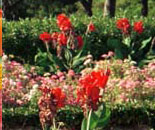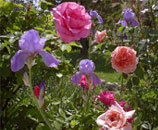In the state of Orissa, India, the vast rural population is very dependent on forests. A substantial part of the livelihoods of these forest-dependent people is obtained from the trade of non-timber forest products (NTFPs). From a commercial viewpoint, the two most important NTFPs are mahua (Madhuca indica) flowers and kendu (Diospyros melanoxylon) leaves. The flowers of mahua are rich in carbohydrates and form the substrate for locally brewed liquor. The new, regenerated leaves of kendu are used in the bidi industry. It is well-known that fire is used in forest areas to initiate the coppicing of kendu plants and to facilitate the collection of mahua flowers.
Unfortunately - and incorrectly - these activities are among the reasons commonly given for forest fires, pointing to the forest-dependent people as the root causes of such fires. What escapes attention, however, is the poverty that these people live in.
This research on community-based fire management (CBFiM) was undertaken in the belief that forest-dependent communities would be sufficiently interested to protect forests and prevent or manage forest fires, owing to the importance of forests to their livelihoods. Cases were studied in the districts of Bolangir, Deogarh and Sambalpur in the state of Orissa. These districts have one of the highest forest covers in the state, and hence a significant proportion of their rural population is dependent on the forest for its subsistence, as well as for much-needed income. In order to generate a full picture of the dynamics involved, elaborate discussions were held with the forest dwellers, grassroots-level workers in a local non-governmental organization (NGO) working in the area and Forest Department officials at all the three sites. At village-level meetings, it was ensured that there was maximum representation of women and village elders.
During the course of the study, it was found that most forest protection initiatives emerged only after the dependent community had started to feel the scarcity of resources. The frequency of occurrence and the management of forest fires seem to be closely correlated to the level of dependency that a community living in close proximity to the forest has over the forest. It was seen that the people at two of the three sites studied were taking a proactive interest in the management of forests. Given that the state Forest Department lacks infrastructure and has poor budgetary allocations, it would be useful to encourage community-based initiatives as the most feasible mode to manage forest fires.
The history of natural attars is very much associated to the history of Kannauj. Kannauj has been known for natural attars from the Mugal period or even earlier when aroma bearing substances like Sandal, Musk, Comphor, Saffron were used as such (without isolation of odorous principles) and the range of such materials and essential oils were further enriched during the Mugal period, when new plants were brought by the Mugals from Central Asia to this country. This lead to the discovery and development of process for the preparation of attar from Roses by Noorjahan, the Mugal queen, This was the beginning of the natural attars in India, which developed and progressed in and around Kannauj and is quite strong even now. Floral Attars may be defined as the distillates obtained by the hydro distillation of flowers in Sandalwood Oil or other base materials like DOP, DEP, Paraffin etc.
The attars of Rose & Kewra are used as flavours in Indian sweets. The main users of attars is in the Pan Masala and Chewing tobacco industry. The two product also unique to India & consume nearly 80% of all the attars manufactured.
All the attars are used as perfumes by themselves. In India and middle East, attars are made as offerings to the God.
There are evidences in the history and Hindu sacred books ( Holy texts) that perfumery tradition dates back to over 5000 years at the time of Indus valley civilization as well when distillation practice was reported to be in existence.
|


